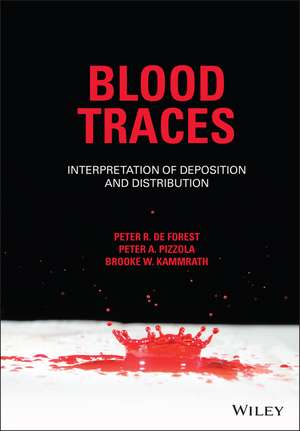Blood Traces – Interpretation of Deposition and Distribution
Autor PR De Foresten Limba Engleză Hardback – sep 2021
Preț: 625.74 lei
Preț vechi: 902.90 lei
-31% Nou
119.75€ • 124.86$ • 99.52£
Carte indisponibilă temporar
Specificații
ISBN-10: 111976453X
Pagini: 384
Dimensiuni: 172 x 257 x 23 mm
Greutate: 0.92 kg
Editura: Wiley
Locul publicării:Chichester, United Kingdom
Descriere
A guide to the scientific interpretation of blood traces
Blood Traces provides an authoritative resource that reviews many of the aspects of the interpretation of blood traces that have not been treated with the thoroughness they deserve. With strict adherence to the scientific method, the authors — noted experts on the topic — address the complexities encountered when interpreting blood trace configurations. The book provides an understanding of the scientific basis for the use of blood trace deposits, i.e. bloodstain patterns, at crime scenes to better reconstruct a criminal event.
The authors define eight overarching principles for the comprehensive analysis and interpretation of blood trace configurations. Three of these principles are: blood traces may reveal a great deal of useful information; extensive blood traces, although present, may not always yield information relevant to questions that may arise in a given case; and a collection of a few seemingly related dried blood droplet deposits is not necessarily an interpretable “pattern”. This important resource:
- Provides the fundamental principles for the scientific examination and understanding of blood trace deposits and configurations
- Dispels commonly accepted misinformation about blood traces.
- Contains a variety of illustrative case examples which will aid in demonstrating the concepts discussed
Written for forensic scientists, crime scene investigators, members of the legal community, and students in these fields, Blood Traces presents the fundamental principles for the scientific examination of blood trace deposits and configurations.
